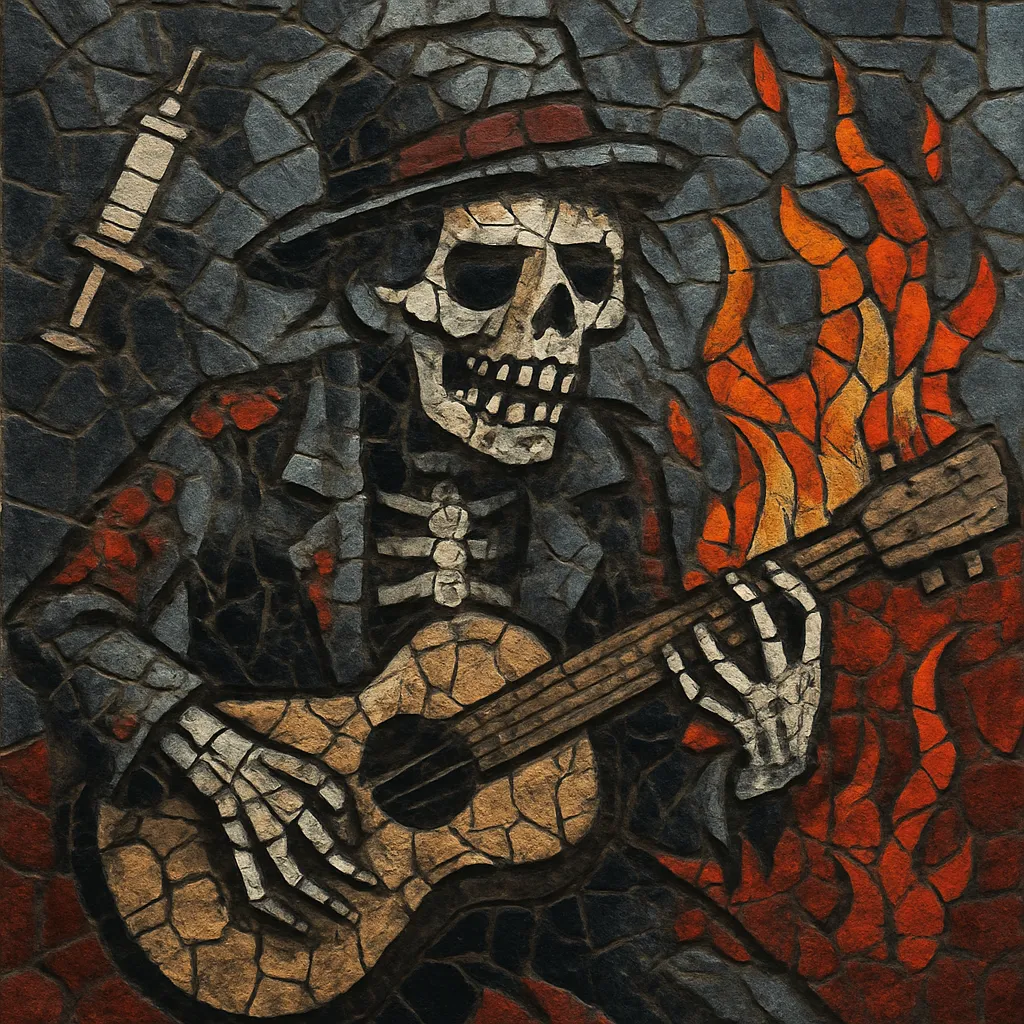Crack rock steady is a fiercely political, ultra-aggressive fusion of crust punk and hardcore with ska and reggae rhythms. The style pivots between off‑beat, skanking verses and explosive, d‑beat or blast‑beat choruses, often within the same song. Guitars alternate between clean upstrokes for the ska passages and heavily distorted, metal‑tinged riffing for the hardcore sections, while basslines frequently borrow from dub and reggae.
Vocals are typically shouted, screamed, or barked, with frequent gang shouts and call‑and‑response hooks. Lyrics are overtly anti‑authoritarian and anti‑capitalist, tackling police brutality, systemic poverty, addiction, houselessness, apocalypse, and nihilism with sardonic black humor. Production tends to be raw and gritty, emphasizing immediacy over polish and amplifying the music’s confrontational edge.
Crack rock steady emerged in the late 1990s in New York City’s Lower East Side as a harder, darker branch of ska‑punk informed by crust punk and d‑beat. Bands like Choking Victim crystalized the template by welding skanking, reggae‑inflected verses to frantic hardcore and crust eruptions, pairing them with scathing, anti‑authoritarian lyrics and raw, DIY production. The term itself plays on Jamaican rocksteady, intentionally signaling a grimy, street‑level inversion of upbeat third‑wave ska.
Choking Victim’s 1999 album “No Gods/No Managers” became a cornerstone, while the members’ subsequent projects—Leftöver Crack, INDK, Morning Glory, and later Star Fucking Hipsters—expanded the palette with black‑metal tinges, more pronounced d‑beat, and occasional horn arrangements. These groups cultivated a strong squat/DIY show culture, disseminating the sound through small venues, independent labels, and word of mouth rather than mainstream channels.
Through relentless touring, compilations, and online file‑sharing, the style spread beyond NYC. Bands across the U.S., the U.K., and Oceania adopted the approach, often emphasizing local sociopolitical issues while keeping the genre’s signature "skank‑to‑blast" dynamics. The scene’s visual language—stencils, patched denim, stark black‑and‑white art—reinforced its anti‑establishment stance and helped codify the aesthetic.
Crack rock steady’s endurance owes to its balance of rhythmic catchiness (ska/dub) with cathartic extremity (crust/hardcore). Its politicized, street‑reportage lyrics influenced later waves of heavy ska‑punk and left a lasting imprint on DIY punk networks. While always niche, the genre became a touchstone for bands seeking to marry danceable grooves with uncompromising sonic and ideological intensity.
The style informed heavier branches of ska‑punk and fueled a continued appetite for politically charged, hybrid punk forms in the 2000s and 2010s. Even as lineups shifted and projects dissolved or reformed, the crack rock steady template remains recognizable: dub‑wise bass and ska upstrokes detonating into crusty, d‑beat fury, with no compromise in message or energy.


